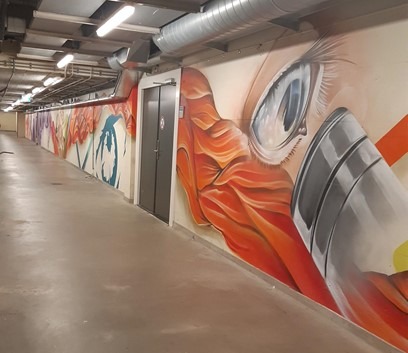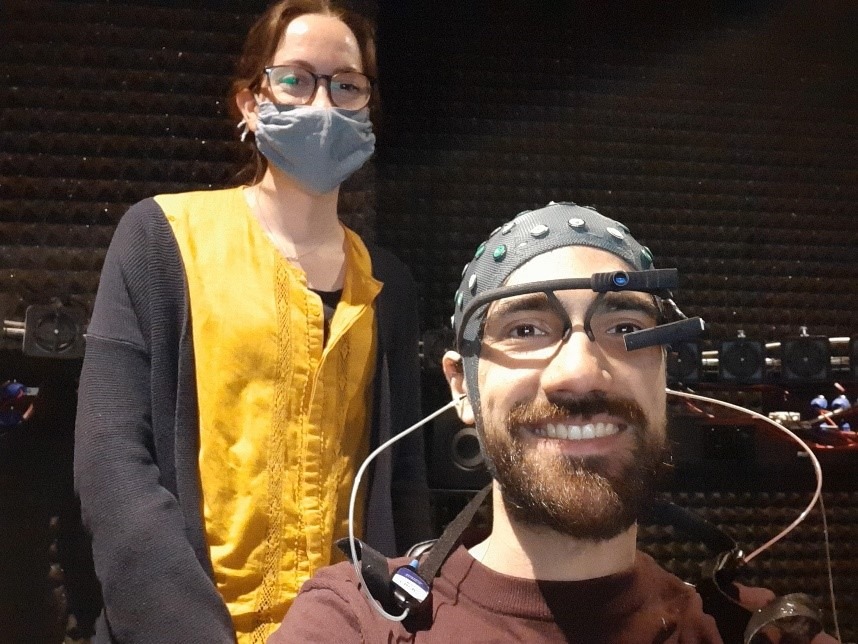The past couple of months I spent quite some time in the lab in Nijmegen in the Netherlands as part of my secondment at Radboud University. There I tested 20 normal hearing subjects, looking at how they experience and perform in different listening situations. Testing patients in the lab is one of my favourite parts of doing research. What I love about it, is that we are not only gathering new and exciting data, which is very hands-on, but also that I get to meet a lot of different people. And, important to mention, I am very grateful that the study participants were willing to participate in the experiment.
This time spent testing participants was even more exciting considering that for the past two years I mostly spent my time working in home office. Being able to spend some time in Nijmegen meeting up (and living) with my fellow MOSAICS ESRs and other colleagues, biking to work every day and being around people (of course with masks, or distance) was a wonderful change of scenery.


For our experiment, we used a listening task where the speech was adapted using vocoders. Vocoders degrade the audio quality of the speech in such a way that it makes the voice sound robotic. This technique is often used in research to simulate the listening experience of a Cochlear Implant recipient. During this task, we registered the participants’ response times, their brain activity (with an electroencephalogram; EEG) and pupil dilation (using a pupillometer). These measurements can tell us something about the participants’ listening effort, i.e., the degree of cognitive demands used while listening.
Electroencephalograms make use of electrodes placed on the subject’s scalp to record the electrical activity from groups of neurons within the brain. Since water conducts electricity, we use a water-based gel to create a good connection between the skin and each of the 64 electrodes. There are many ways to look at the signal that we measure. For example, whether the overall brain activity increases, or whether activity in specific electrodes increases in different conditions of a task. However, for the purpose of our study, we are looking at brainwaves of specific frequencies, and whether those change during different conditions of the task. Previous research has shown these brainwaves might be linked to cognitive functions and can, therefore, help us get more insight into cognitive functions that are present during the task.
Pupillometry uses a camera to measure pupil dilation and constriction. As you might know, the pupil responds to different kinds of stimuli: to brightness and near fixation, but also to increased arousal and mental effort (for example pupils dilate if you are attracted to someone). Similarly, the mental cognitive effort during listening affects pupil size. The more challenging the listening situation, the more the pupil dilates.
Testing patients in the lab is one of my favourite parts of doing research
Now that all the data is collected, I’ll move on to the next exciting steps of analysing the data with the help of my wonderful colleagues in Nijmegen. Also, I recently started working on a new study for my secondment at the Medizinische Hochschule Hannover in Germany. During this study I will be working with CI patients, which I am very much looking forward to.
